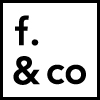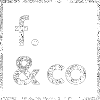24. Collectivities
To brand or not to brand. That is not the question. A city or country is a brand. There’s no doubt about it.
Brands. Cities. Countries.
Indeed, well before the terms “country branding”, “city branding”, “destination branding”, etc. were introduced to the world of academia, cities and countries have been searching for tags – global city, knowledge city, innovative city, or more recently, creative city, or “smart” city – and playing with words to [effectively] communicate their competitive advantage : Paris, City of Lights; I (heart) New York ; Montréal, c’est toi ma ville! In fact, one does not need to look further than a Mad Men episode to get the idea – cities, but also countries, reaching out to Don Draper in order to create a successful campaign. Remember the Israel Tourism Bureau looking to mark Israel as the “promised land” (season 1, episode 6)?
However, branding a city, a region, or a country implies going above and beyond a name, a logo or a communication campaign. Marking to seduce a clientele is one thing, but building a strong brand is a different story. It is not marketing for what you want your city to be, but rather it is about what your city actually is, what it represents and who it includes. This clearly has different implications and requires a different posture. To a certain extent, a city branding has nothing to do with marketing. It’s a policy issue and a community endeavour.
A city cannot be branded without considering its surroundings, its macro-environment, and most importantly, its constituents, its people. More precisely, the brand is created and communicated by a broad spectrum of stakeholders: government, citizens, private sector, tourists, intellectuals, knowledge and creative industries, etc. The real question is: how do you get all of them to contribute to building a strong, cohesive brand ?
Living/Urban Labs. Networks. Ambassadors.
In Barcelona, old factories, like Fabra i Coats have been reused as public spaces for arts, culture and technology creation. Thanks to the 22@ district initiative – an urban lab bringing together universities, institutions, companies and citizens, all stemming from a variety of clusters (media, energy, medical, design, IT) – all these stakeholders are actually contributing, consciously or not, to the building of their city’s brand. Together, they are crafting the images, the traces, that will eventually be left in the consumers’ [or what we are used to calling the “target” – be it the locals, tourists or businesses] mind. These images are greatly influenced by the perceptions consumers have of the other dimensions of the city’s environment.
In Lahti, Finland, authorities actually did not develop a strong branding. Rather, they gave the actors of the local creative economy a tribune, some sort of branding framework, with access to top-quality production and various distribution channels, to showcase their talents, personalities and contributions to the Lahti identity. Community members – those featured in the YouTube videos, their families, friends, clients, providers – were thus automatically empowered as privileged ambassadors of the “lahden kaupunki” brand. These were not hired actors, but actual “actors”, agents of the brand.
With the ever increasing global competition, how can cities and countries stand out from the crowd to attract “consumers” – the tourist, the artist, the entrepreneur ? How can they really manage their brand? The one thing that seems obvious is this need of posture change. A different frame of mind. One that is trending in marketing, but also in management, strategy, politics, etc. One that is more inclusive, and that sets up the places and spaces needed for collaboration between all stakeholders, allowing for the seamless flow of knowledge, creation and innovation and fostering a stronger social network. Only then will cities, regions and countries be able to stay true to their core values and let their brand live…
This text is part of a series written in the context of the Fifth edition of the Montreal-Barcelona Summer School on Management of Creativity, organized by Mosaic HEC Montréal and Universitat Barcelona, July 9 to 24, 2013.
Illustration by Studio 923a. Read all posts in the series at blog.fandco.ca/yulbcn.


